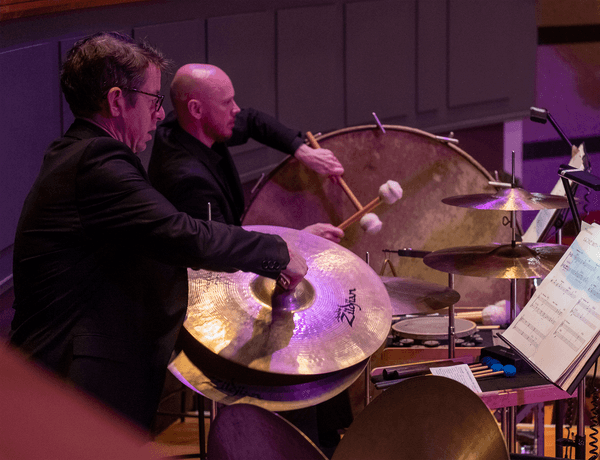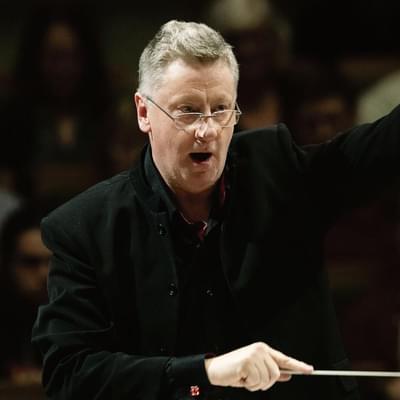Classics at the Movies

Full Programme:
- Strauss, Also Sprach Zarathustra (Opening) (2mins - as featured in 2001: A Space Odyssey and Barbie)
- Mozart, The Marriage of Figaro: Overture (4mins - as featured in Charlie and the Chocolate Factory)
- Puccini, Gianni Schicchi: O mio babbino caro (3mins - as featured in Mr Bean's Holiday)
- Mahler, Symphony No. 5 - Adagietto (7mins - as featured in Tár and Death in Venice)
- Handel, Music for the Royal Fireworks: La Réjouissance (3mins)
- Gounod, Faust Jewel Song (5mins)
- Elgar, Enigma Variations: Nimrod (3mins - as featured in Dunkirk and Elizabeth)
- Sibelius, Finlandia (8mins - as featured in The Walking Dead and Die Hard)
- Verdi, La forza del destino: Overture (8mins)
- Verdi, La traviata: Ah, fors' è lui... Sempre libera (4mins - as featured in Priscilla Queen of the Desert)
- Beethoven, Symphony No. 7 - 2nd Movement (7mins - as featured in X-Men: Apocalypse, Westworld, and The King's Speech)
- Mascagni, Cavalleria rusticana: Intermezzo (4mins - as featured in The Godfather Part III and Raging Bull)
- Puccini, Madama Butterfly: Un bel di vedremo (5mins)
- Tchaikovsky, Swan Lake: Hungarian Dance (2mins)
- Offenbach, Orpheus in the Underworld: Can Can (2mins - as featured in The Little Mermaid and Moulin Rouge)
- Saint-Saëns, Symphony No. 3 - Finale (8mins - as featured in Billy Elliot and Black Swan)
Performers

Stephen Bell
Conductor
Máire Flavin
Soprano
Introduction
© Stephen Bell, Conductor & Presenter
Film music falls into three main categories; the main source of orchestral scores is obviously commissioned music from a movie composer. Going back in time, all the major studios had music departments with the finest orchestral players, and a whole backup team of writers and orchestrators – just think of some of those early MGM classics and the talent they had working on them!
That tradition, championed by the likes of Korngold and Rosza, has carried on to the present day – undoubtedly helped by the likes of arguably the finest of them all, John Williams – right through to more recent exponents such as Hans Zimmer and Michael Giacchino.
The relationship between Director and Composer is of particular interest, and again Williams has to get a special mention for the extraordinary partnership with Steven Spielberg going back many decades, and demonstrating perfectly the level of trust and understanding between the two skill sets and, indeed, the huge scope of subject matter they have to turn their hands to.
Writing for film (I can only imagine) is more difficult than just sitting with a blank sheet of manuscript paper and waiting for inspiration. There is the obvious pressure of time, as the music is one of the last parts of the production process, but also the constraints of having to fit the music to the visuals, which have already been shot. This often ends up making the music inseparable from the actual film, and clearly part of the skill of the composer is to be able to make the music a success in a concert situation, away from the visuals.
Occasionally, and maybe less so nowadays, there are library charts used. This is where a composer books a studio and an orchestra to record original music on licence that they hope might fit the bill for a director looking for a certain style or mood. Often these composers find their work making their way onto a soundtrack and maybe even offering an opening into commissioning a movie score.
The third type is when a movie director pulls an established piece of music “off the shelf” and inserts it into a soundtrack. This is often a pop song – many successful artists are more than happy to have their latest hit associated with a blockbuster movie! Our concert on September 29th looks at where orchestral pieces have been used to great effect, often alongside newly commissioned underscore. Perhaps historically the most obvious early example of this was David Lean’s 1945 film “Brief Encounter” which famously used Rachmaninov’s 2nd piano concerto to great effect. Disney, too, was struck with the idea of introducing a whole new audience to classical pieces with his ground-breaking “Fantasia” way back in 1940. More recent examples include “Dunkirk”, Christopher Nolan’s powerful war drama, that makes very effective use of Elgar’s Nimrod (at a very slow pace) alongside Zimmer’s Oscar nominated original score.
We’re delighted to be joined by Irish soprano Máire Flavin who will also explore some celebrated opera extracts by composers including Puccini and Gounod that have made their way into famous movie soundtracks.
We look forward to welcoming you to Symphony Hall!
Featured image © Hannah Fathers